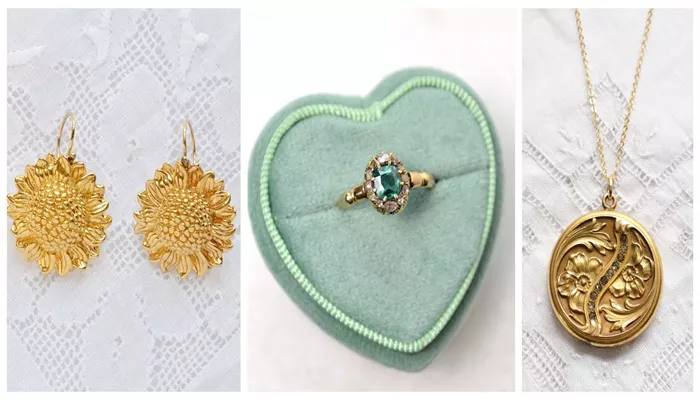India’s jewellery industry is in the midst of a major transformation. Traditionally seen as a vault-worthy asset for special occasions, jewellery is now becoming part of everyday fashion. A new generation of buyers, boosted by higher incomes and digital awareness, is driving this change — with preferences ranging from bridal sets to sleek, daily-wear pieces.
“People now wear jewellery every day,” says Rupesh Jain, founder of the jewellery brand Lucira. “We’re seeing unique customer segments emerge. For example, many modern moms dress up completely for school parent-teacher meetings,” he observes.
Changing Tastes and the Rise of Lab-Grown Diamonds
This shift in buying behavior, along with the growth of lab-grown diamonds and demi-fine jewellery, is reshaping the jewellery market. Jain, who earlier founded Candere, a digital-first jewellery brand, is once again at the heart of this evolving space.
Tech Meets Tradition
Jain launched Candere in 2012, a time when buying precious jewellery online was almost unheard of. Coming from a traditional jewellery business background and trained as an engineer, he took a bold step by blending both worlds.
“At the time, the idea that someone would pay fully online and wait two weeks for delivery was surprising,” he recalls.
The brand’s early breakthrough came when it received a large order from Oracle’s Mangalore office. But what truly made a difference was customer service — such as replacing a misfit ring with a newly made one at no extra cost. “That’s when we realized that sizing could be a bigger issue than we thought,” he explains.
From there, Candere focused on a tech-driven experience. It added ring sizers to every order, educated consumers, and ensured smooth last-mile delivery. “We stayed fully online for nearly nine years before going offline in 2022,” Jain notes.
Acquisition by Kalyan Jewellers
A major milestone was Candere’s acquisition by Kalyan Jewellers. Jain says the partnership was strategic rather than just financial. “We focused on everyday jewellery, and they focused on bridal pieces. The idea was to build a journey — to engage customers early and transition them to Kalyan for wedding purchases.”
Candere offered jewellery priced below ₹30,000, while Kalyan typically sold pieces over ₹70,000. This customer funnel — from first salary to engagement and eventually weddings — was carefully planned.
During his seven-year stint with Kalyan Jewellers, Jain learned several important lessons. “Planning and profitability were always key. Also, managing the supply chain properly was essential,” he shares.
But the biggest lesson? Cultural differences. “There’s a big gap in how startups and legacy brands make decisions,” he says.
The Launch of Lucira: A Focus on Engagement and Wedding Rings
Jain’s latest venture, Lucira, launched on Akshaya Tritiya this year. This time, the focus is sharper. “Candere was about everyday jewellery. Lucira is all about engagement and wedding rings,” Jain says.
Targeting the emotional solitaire jewellery segment, Lucira aims to mix online convenience with physical store presence. “We plan to go offline very quickly. Our first store should open by September,” Jain reveals.
The brand also plans to invest heavily in lab-grown diamonds — a product Jain believes is central to the industry’s future. “Educating customers about lab-grown diamonds will require multiple players. The more brands that enter, the more trust we can build,” he says.
Jewellery Trends in a Post-Pandemic World
Today’s buyers want value and experience. They prefer lightweight, versatile designs, high-quality stones, and affordable pricing. “India now leads the world in manufacturing lab-grown diamonds. The challenge is in building out the distribution network,” Jain says.
He notes that new purchase occasions are also gaining popularity. “Proposals are becoming more common — at malls, concerts, and even movie theatres,” he adds.
With demi-fine and silver jewellery on the rise, brands now need clear design identities. “You need to choose a specific design style and build your catalogue around it,” Jain advises.
Why Co-existence, Not Competition, Will Shape the Future
Jain believes India’s jewellery industry will thrive through co-existence. “Startups can experiment, fail quickly, and learn fast. Big brands bring scale and trust. Both are needed in the ecosystem,” he says.
The Indian jewellery market, worth ₹5–6 lakh crore, is still dominated by fine jewellery — which makes up 65–70% of the value. But the shift toward wearable and affordable pieces is gaining ground, driven by changing mindsets and rising input costs.
“Margins are better in demi-fine and silver jewellery. Then comes diamond jewellery, and then plain gold,” Jain explains.
Looking ahead, Lucira will focus on merging online data with offline customer experience. Store expansion will be guided by smart technology and consumer insights. “We want our future stores to get smarter over time,” he says.
Still, one factor remains constant.
“Trust is the core of this business. Everything else can be solved with time and tech. But trust only comes with time,” Jain concludes.
Related topics:
- Elbaite: The Stunning Gemstone of Colors and Symbolism
- Paraiba Tourmaline: The Rarest Gemstone with Neon Beauty
- Michael M Jewelry Maintains Prices Despite Tariff Challenges


